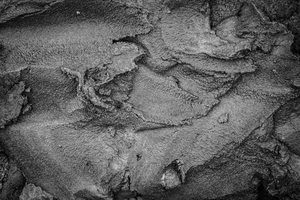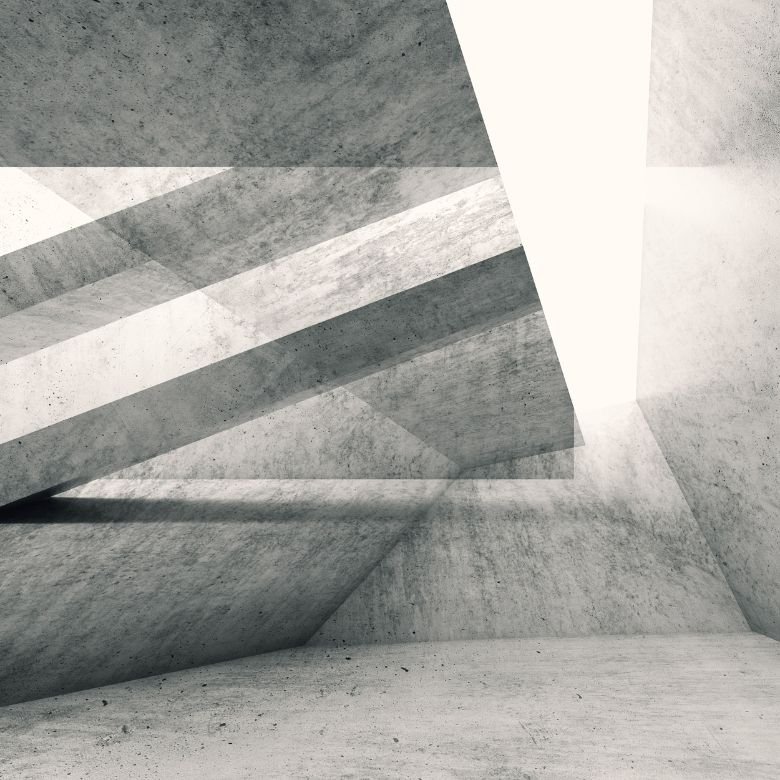Lightweight cellular concrete is one of the most popular and widely used building materials. It is very durable and widely available, so it is no surprise that it has dominated the Polish market for years. Read our article and find out what cellular concrete is, what are its main types, advantages and disadvantages. We will also briefly discuss the technology used for cutting and gluing concrete blocks. Let's begin!

What are aerated concrete and cellular concrete?
To begin with, let us clarify the basic concepts: what is aerated concrete, cellular concrete and what is the difference between these materials? Broadly speaking, cellular concrete (ABK) is a variant of classic concrete, i.e., a mixture of cement, sand and water. The difference is that cellular concrete has a porous structure. Its colloquial name comes precisely from the characteristic cells formed as a result of the foaming and carbonation of the slurry.
With regard to the technology used to prepare the concrete, we distinguish 2 basic types of cellular concrete:
- aerated concrete (cellular concrete mixed with gas-forming substances),
- foam concrete (cellular concrete with the addition of a foam compound).
Bricklayers and builders often refer to aerated concrete cellular blocks as: suporex, ytong or hh. However, it is worth noting that these are only brand names or names of manufacturers. They have nothing to do with the correct, technical terminology.
Properties and parameters of cellular concrete (aerated concrete vs. cellular concrete)
Planners of energy-efficient buildings have valued the properties of cellular concrete for many years. It is a great heat and sound insulator, a lightweight, vapour-permeable material, resistant to frost and high temperatures. Porous concrete does not burn and does not contain substances harmful to humans or the environment. The weight of cellular concrete, on the other hand, depends on the density and the proportion of raw materials used.
Cellular concrete can also have a higher or lower compressive strength (this also applies to the density of aerated concrete). Different grades of this material are available from wholesalers.

What types of cellular concrete and aerated concrete exist?
With regard to density, cellular concrete is divided into different types. In Poland, you can find aerated concrete of the following grades:
- 250 – 300 kg/m3 (for single-layer wall construction),
- 400 – 500 kg/m3 (for walls requiring wool or polystyrene insulation),
- 600 – 700 kg/m3 (for internal partition walls).
You will find cellular concrete in various shapes in building wholesalers: there are classic blocks, thin plates and massive lintels.
Cellular concrete: advantages and disadvantages
What do you need to know about the advantages and disadvantages of cellular concrete (aerated concrete)? It is an excellent material for external and internal walls construction. Its main advantages are:
- thermal insulation and impermeability (cellular concrete provides excellent protection against damp, heat and cold),
- durability (how many years will cellular concrete last? Manufacturers provide an average durability of 50 to 100 years),
- soundproofing,
- simple assembly and handling (the blocks are light and handy),
- variety of forms,
- resistance to mould and bacterial penetration,
- low radiation factor (is aerated concrete harmful? No, because just like silicate or clay blocks it has a very low material activity index),
Due to its properties, aerated concrete is universally applicable: it is suitable for both residential and industrial construction.
The main disadvantage of cellular concrete, on the other hand, is its brittleness – the block may break if dropped on a hard surface. Another disadvantage of aerated concrete is the need for additional insulation in walls made of cellular blocks.
How and with what to cut cellular concrete?
Cutting cellular concrete blocks does not require the use of sophisticated tools. Nor do you need to have any advanced technical knowledge to process this material.
What to use to cut cellular concrete blocks? All you need to cut cellular concrete is a pitchfork hand saw. The actual cutting of the aerated concrete is also simple: after taking measurements, you mark the cutting point with a pencil and cut out the corresponding section of the block. The remaining element, in turn, is usually useful in other parts of the walls, so no unnecessary waste is produced.

What to glue aerated concrete with – adhesive or mortar for cellular concrete?
Which mortar to use for cellular concrete and aerated concrete? You will easily find a variety of mixes designed to join cellular blocks in local wholesalers and building depots. These include:
- adhesives (thin-layer adhesive mortars for masonry),
- traditional mortars based on sand, water and cement.
On the block manufacturers’ websites, you can find information on what to glue the cellular concrete with and how thick the joints should be. However, experienced bricklayers themselves know best which adhesive for cellular blocks will work best. More and more professionals are giving up classic cement-lime mortar in favour of specialised adhesives that bond porous surfaces very well.
Why use aerated concrete adhesive? Efficiency and durability of joints
What makes builders favour the use of modern cellular concrete adhesives instead of mortar? The consumption of the mix is lower, as approximately 4.5 kg of mortar is sufficient for 1 m2 of 24 cm masonry (assuming a layer thickness of 3 mm). In addition, cellular concrete in adhesive mortar ensures good thermal insulation of the building. The joints are then durable and the risk of leakage is low.
Are you looking for more information on which aerated concrete mortar to choose and how to maintain the desired properties of aerated concrete blocks? Many practical tips can be found in specialised topic forums, manufacturers’ and associations’ websites dedicated to the concrete industry.
Check out the range of concrete additives and admixtures from the PCC Group.
- https://muratordom.pl/budowa/sciany-murowane/beton-komorkowy-material-konstrukcyjny-o-wielkich-mozliwosciach-aa-rqWL-JF6j-NR7b.html
- https://www.sciencedirect.com/science/article/abs/pii/S0950061815305328
- https://www.britannica.com/technology/construction/Concrete